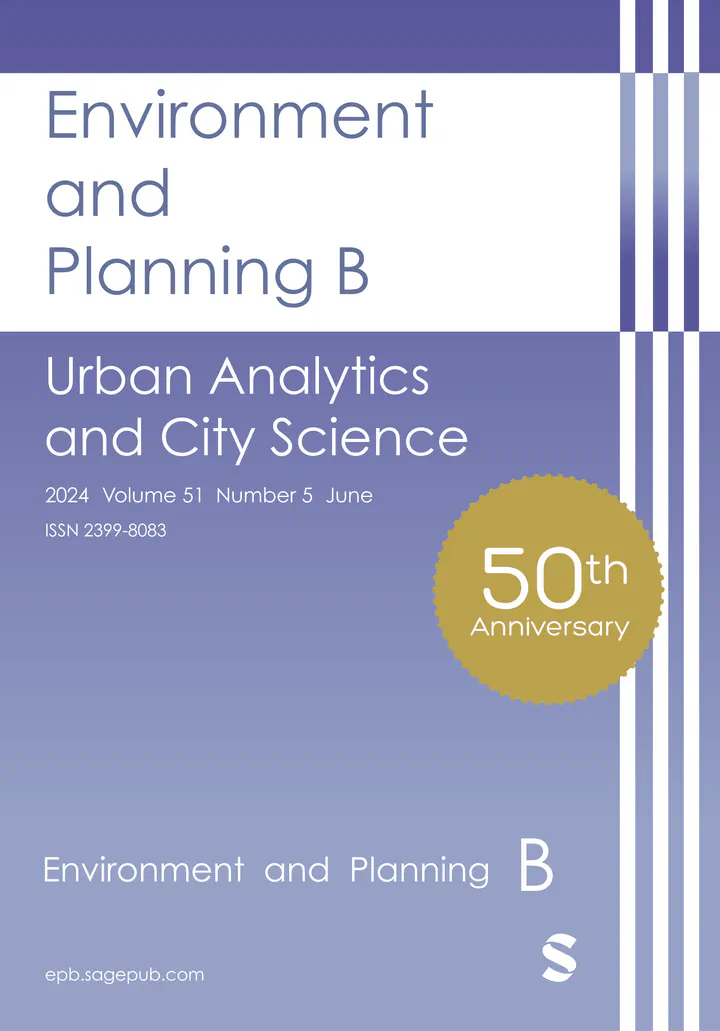We are organising a Special Issue in EPB on Urban AI
Recently, Urban AI has become an emerging field that combines AI, spatial computing, and urban science to address complex challenges.

Together with collaborators from Germany and USA, we are organising a special issue in Environment and Planning B: Urban Analytics and City Science, on the topic of Urban AI for a Sustainable Built Environment.
Here is the summary of the call for papers:
Recently, Urban AI has become an emerging field that combines AI, spatial computing, and urban science to address complex challenges. This special issue aims to promote the development of urban AI with multimodal geospatial data collected from satellites, street view imagery, and loT devices to enable evidence-based decision-making for built-environment management and urban infrastructure modelling. Novel research in this direction will address pressing and essential challenges in urban environments, ranging from sustainable urban planning and smart mobility design to built-environment management, public health, urban land use, urban disaster management, and AI-assisted humanitarian mapping to help fight extreme heat and mitigate the impacts of climate change. Keywords: Urban AI, Built-environment, Geospatial Big data, Built-environment, Informed-decision making, Volunteered Geographic Information
The special issue is edited by Steffen Knoblauch (Heidelberg University, Germany), Hao Li (Technical University of Munich, Germany), Filip Biljecki (National University of Singapore, Singapore), Wenwen Li (Arizona State University, USA), and Alexander Zipf (Heidelberg University, Germany).
For the full CfP see here, while for all past and ongoing SIs in EPB check this page.
The submission deadline is in December 2024.
Environment and Planning B: Urban Analytics and City Science is the leading journal for the publication of high-quality articles that present cutting-edge research in analytical methods for urban planning and design. The journal focuses on smart cities, urban analytics, GIS, and urban simulation models. It also deals with visualisation, computation, and formal design-based methods applicable to morphological processes and structures in cities and regions.
Why submit to this special issue? EPB is a very well regarded journal in the urban analytics community, and it has published impactful papers in the community. It has been one of our journals of choice, and we published a couple of papers there recently, e.g. here and here. Further, this special issue is on a unique scope that may be suitable for a variety of submissions. Finally, EPB publishes papers that are a bit shorter than those in most of other journals, and it also allows Urban Data/Code papers instead of only traditional types of articles that are a great opportunity to showcase your open-source software or open data products.
We look forward to receiving your great work and learn what you have been up to! For further information about the submissions and guide for authors, please check the journal’s website.